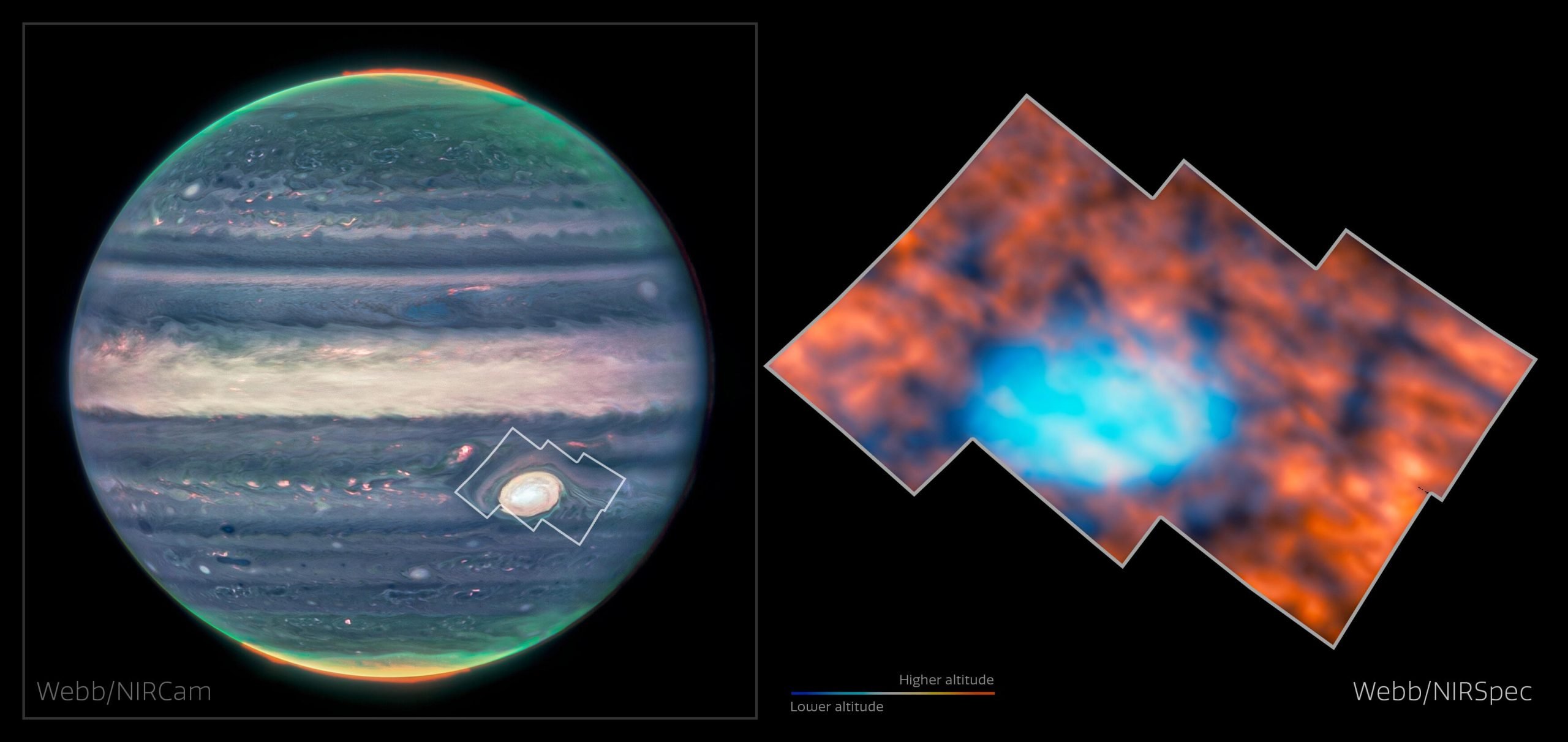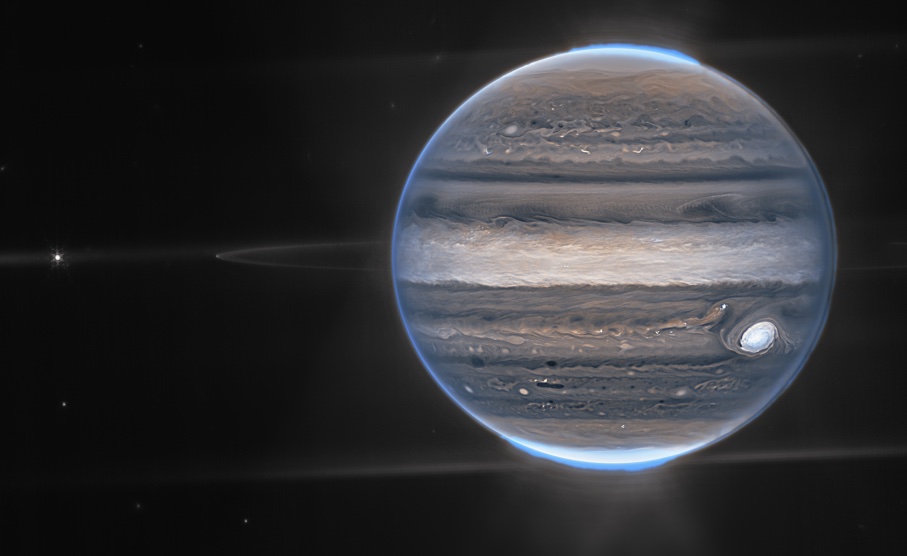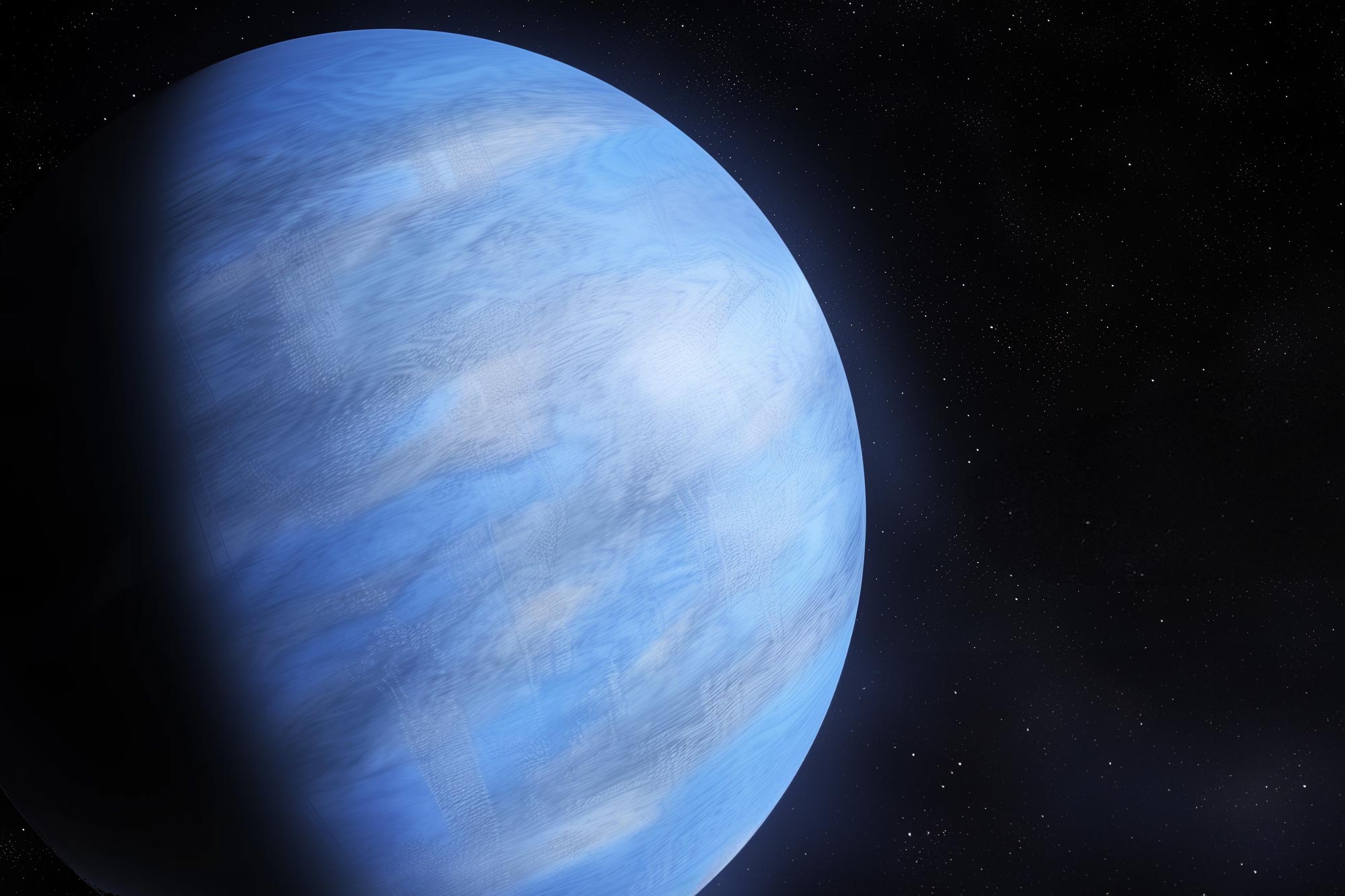Webb Discovers Unexpected Phenomena Above Jupiter’s Great Red Spot
New observations of Jupiter’s Great Red Spot have revealed that the planet’s atmosphere above and around the infamous storm is surprisingly interesting and active. This image shows the region Webb observed – first the location on a NIRCam image of the entire planet (left), and then the region itself (right), imaged by Webb’s Near-InfraRed Spectrograph … Read more




